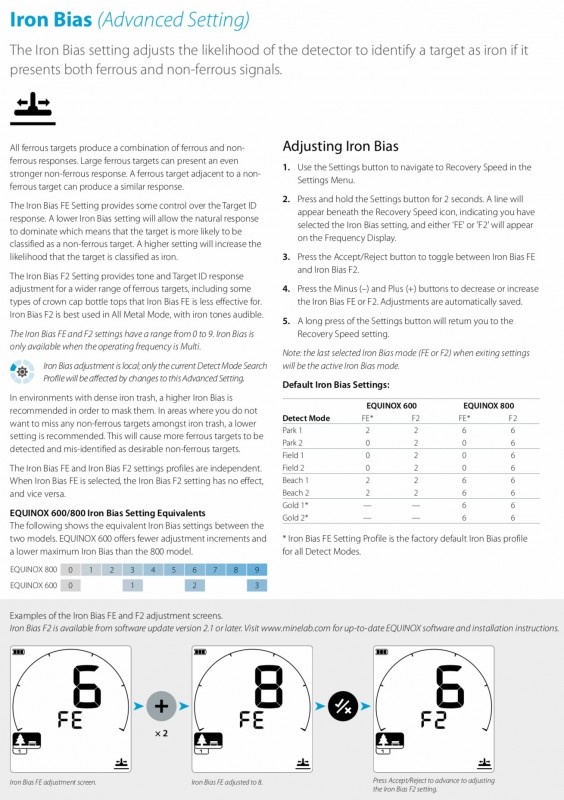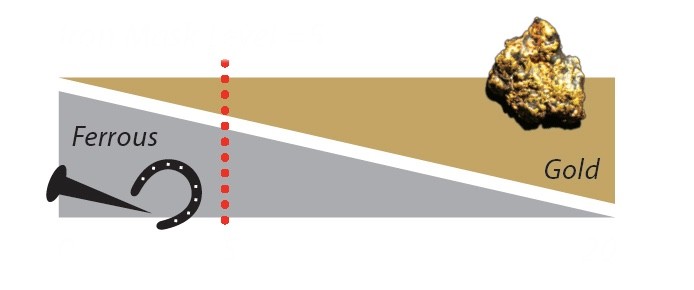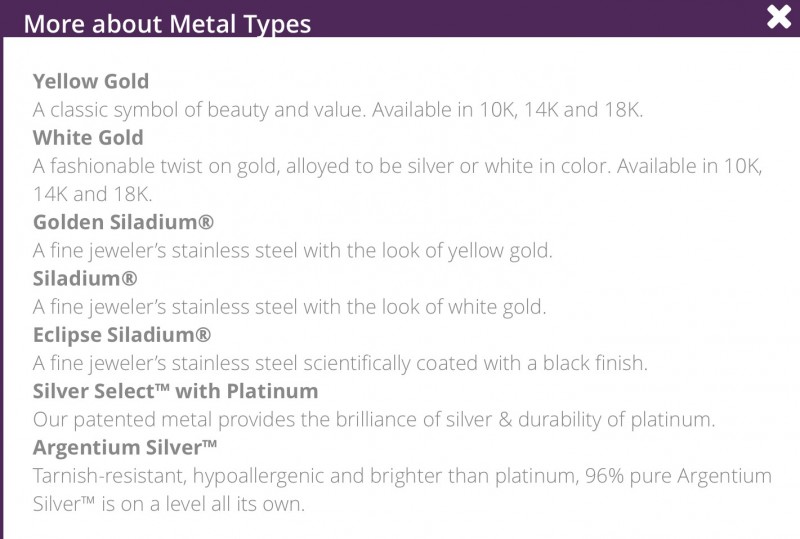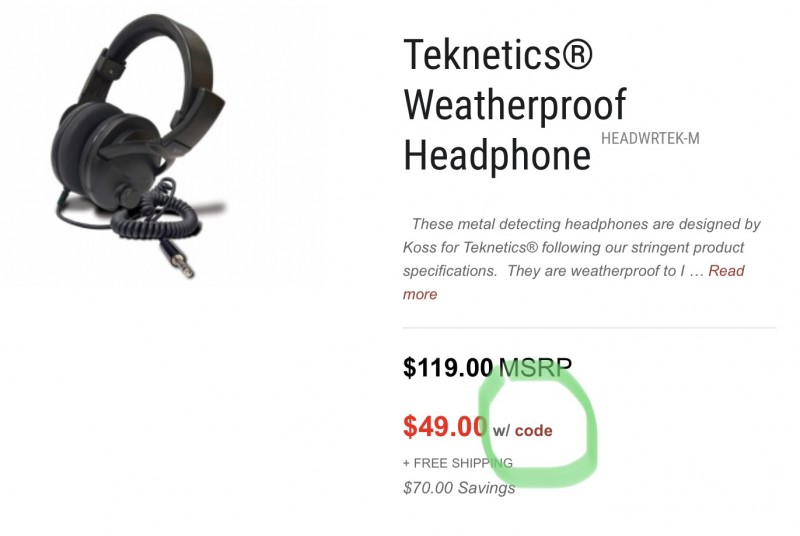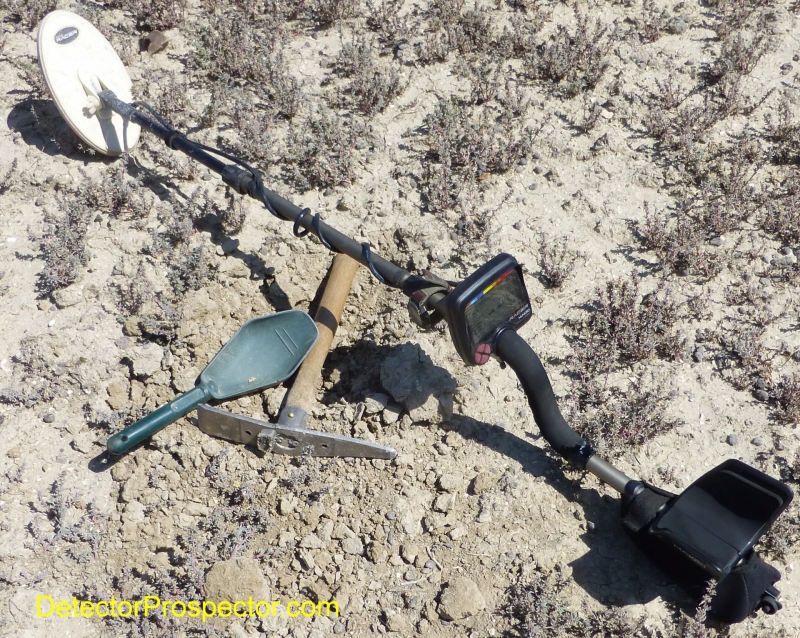-
Posts
19,761 -
Joined
Content Type
Forums
Detector Prospector Home
Detector Database
Downloads
Everything posted by Steve Herschbach
-

Iron Bias Fe Versus Fe2
Steve Herschbach replied to Steve Herschbach's topic in Minelab Equinox Forum
For me I was surprised FE2 kicked in so quickly. FE has no effect run to the extremes. FE2 has an effect almost immediately, with the ferrous breaking up significantly at only FE2-2 The control is more aggressive than I anticipated. -

Iron Bias Fe Versus Fe2
Steve Herschbach replied to Steve Herschbach's topic in Minelab Equinox Forum
The thing is, the vast majority of detectors I have ever used like to call those rotted can sections non-ferrous. It is a rare detector that can tune the stuff out halfway well, and none that have a specialized variable control for the function besides the standard disc notches. I’m kind of anxious now to give the Equinox a try at a highly polluted site and see how it goes. Never a free lunch though. Cranking the setting up will help shut up lots of the flat ferrous, but also increase the masking. Then you are right back to square one, digging the ferrous to reveal the hidden treasures. -

Problem With V3i 10” Stock Coil
Steve Herschbach replied to Aaron's topic in White's Metal Detectors
So it is a V rated coil, but apparently bad from the factory. Yes, they will probably still warranty it. That new D2 design only came out three years ago so it can’t be very old. Have him contact the people in the post pinned at the top of this forum. -

Iron Bias Fe Versus Fe2
Steve Herschbach replied to Steve Herschbach's topic in Minelab Equinox Forum
Like most things I would expect that to be totally dependent on ground mineralization, and therefore highly variable. No matter what detector I use, my expectation is all functions break down with depth and any increase in mineralization. The question for me is most applicable to gold nuggets in mineralized ground, where my inherent distrust of ferrous filtering always comes to the fore. I have seen countless ferrous signals turn out to be gold nuggets in high mineral ground. My fear is increasing the iron bias at all in such ground conditions all but insures this will occur. I will dig literally thousands of nails rather than risk seeing a large nugget at depth passed up as ferrous. A 10 ounce nugget will read ferrous right at the edge of detection depth, so size does not mean as much as signal strength. A small nugget in real bad ground can easily read ferrous, and adding enough depth to turn that big nugget signal into a faint reading risks having all that intervening soil create a ferrous masking effect. In general I consider Iron Bias to be a last ditch function, left at zero unless I am forced to use it. By that I mean ready to walk away from a site due to false signals causing me to dig endless ferrous. In such situations it’s better to just crank the control up, and accept the losses for whatever they are. Better that than abandoning the location, which means no finds at all. -

Iron Bias Fe Versus Fe2
Steve Herschbach replied to Steve Herschbach's topic in Minelab Equinox Forum
Note that the Iron Bias function is only available when the Equinox is operating in multifrequency. The setting will not be available in single frequency modes. Use the Accept/Reject button to toggle between FE and FE2 once you have accessed the function. Equinox Manual, page 52 (emphasis added): All ferrous targets produce a combination of a ferrous and nonferrous response. Large ferrous targets can even present a stronger non-ferrous response. Also, a ferrous target adjacent to a nonferrous target can produce a similar response. The Iron Bias Setting provides some control over the Target ID response. A lower Iron Bias setting will allow the natural response to dominate which means that the target is more likely to be classified as a non-ferrous target. A higher setting will increase the likelihood that the target is classified as iron. In environments with dense iron trash, a higher Iron Bias is recommended in order to mask them. In areas where you do not want to miss any non-ferrous targets amongst iron trash, a lower setting is recommended. This will cause more ferrous targets to be detected and identified as desirable non-ferrous targets. -
Jeff and I had a couple PM messages back and forth about Iron Bias, and what it does. Jeff made mention he thought it took items with mixed ferrous and non-ferrous responses and reduced or eliminated the non-ferrous response, leaving only the ferrous response. I usually set Iron Bias to 0 unless I forget and leave it at some default setting. I hunt full tones and between high 39 spikes and audio "tells" while in full tones I generally do not have much issue with ferrous tricking me, and so it has not been anything I have investigated much. The bottom line is I was feeling vague on exactly how this control acts in practice. As we all know bottle caps with the normal FE settings had a habit of reading in the mid-teens near 13. I have also run into issues with large flakes of decomposed steel cans in old mining camps that read in the teens. I'm not worried too much about bottle caps, but in some old camps that rotted tin can debris can really mess an area up. Minelab introduced the new FE2 setting that allows for more range on the control. Jeff's message made me wonder - is Iron Bias reducing the non-ferrous false signals, or increasing the ferrous signal? This short video shows the problems and the solution, and answers this question. I start with a piece of tin steel that gives a non-ferrous reading around 15 in normal FE mode, and show that from FE0 to FE9 the target gives a clean mid-tone with no ferrous report of consequence. The old FE setting was ineffective on this stuff. Then I go to FE2 and show that increasing the setting rapidly shifts from a non-ferrous reading to a ferrous reading. At 0 it's clean non-ferrous. Just going up to 2 makes it a mixed ferrous and nonferrous reading, at 3 it's mostly ferrous with some high tone mixed in, and at higher settings it is a solid ferrous reading of -7. To me it looks simple. The control is variable, and a particular item can be adjusted to read solid non-ferrous, or to give mixed tones, or to read solid ferrous. It is not a matter of just decreasing the false signals. More like converting what were non-ferrous signals to ferrous signals in a continuous range. This all goes back to the ferrous versus non-ferrous range having a full overlap, and much like how you can use the tone break to decide what items near target id 0 read ferrous and which do not, the Iron Bias offers a secondary control that does the same with these problematic items. The part I do not show? There are good items that will do the same, and I need to try and find one. In theory there is a good item that will give a false ferrous if this setting is too high. Otherwise we would not need the control. Just set it to max and forget. So the real question here that I think remains is not about the ferrous. The control will clearly help with making ferrous items read ferrous. But what about the reverse? What non-ferrous items will be revealed by leaving this control at a low setting? I take it as a matter of faith these items exist and so I leave the control low at or near zero. But how common are they? Am I suffering needlessly? What are the risks of setting the control too high? Minimal risk, or high risk? The best way to find out may be to simply go detect, but take the time to double check items at the full FE2 setting of 9 to see how many might read ferrous when they are not. Be patient - it might take a minute for the video to start once you hit go. fe-v-fe2.mp4 If somebody could make a perfect ferrous/non-ferrous filter, then we would not need the control. Many casual detectorists don’t need it at all either. The reality is the setting is a trade off. Higher eliminates more ferrous, and also runs more risk of missing the desired non-ferrous. Conversely, lower settings reduce the risk of missing desired targets, but you dig more trash. So the question is pretty simple. Are you willing to let the engineer pick the best setting for you? Or would you like the ability to make that decision yourself? People hate digging trash, so I find presets to be too aggressive for me. I get very worried if I’m digging no ferrous at all. So I tend to set where I’m digging some, but not so much as to bother me. It gets me “iffy” finds others miss. This is a simplified example. Iron bias far right gets all gold, but you dig all the ferrous also. Far left eliminates all ferrous, but loses all gold. A typical factory setting as illustrated might eliminate most ferrous, but at what cost? It is interesting that the control is on,y available in multifrequency on the Equinox. The issue predates multifrequency, with variable bottle cap reject controls going back to analog detector days. It’s an issue inherent in the physics of the targets being detected. If anything this is a problem that was accentuated with the switch from concentric to DD coils. Concentric better separate flat ferrous targets than DD coils, so this was less an issue when concentric reigned supreme. The newest bottle caps are even worse also, being made of a much larger range of materials than the simple caps of old. It is not just bottle caps though, but decomposed flat roofing steel, old rusted can pieces, and more. Why ferrous items can read non-ferrous From Whites XLT manual (6.59 kHz single frequency): BOTTLECAP REJECT Adjusts how strongly the instrument rejects or breaks up on iron. Most starting programs use the minimum setting. As larger numbers are selected, more bias rejection against iron occurs. The advantage of higher BOTTLECAP REJECT settings is that in high-trash areas more decisive iron rejection occurs. Trash becomes easier to identify by the broken sounds they produce. The disadvantage of a high Bottlecap Rejection setting is if an iron target is close to a good metal, the high degree of bias against iron may cause the detector to cancel both responses. Another disadvantage is that all targets, iron and non-iron, tend to start sounding more broken at high levels of BOTTLECAP REJECT. The operator needs to fine tune BOTTLECAP REJECT according to their preferences and the conditions being searched. Note that according to White’s, setting this control too high can contribute to masking issues. It makes sense, as all we are doing is adjusting the tipping point on mixed target responses, and a ferrous target next to a non-ferrous target presents just that issue.
-

Problem With V3i 10” Stock Coil
Steve Herschbach replied to Aaron's topic in White's Metal Detectors
If the machine works fine with other coils and not this coil then the coil is the issue. Did the coil work before and now it does not? Is it V rated? Whites coils have a serial number stamped in one ear. If the coil is designed for the V series there will be a V stamped in the ear also. The same coils were made for the DFX prior to the V3 being introduced, but the V3 requires higher tolerances and so some of the older coils overload at higher gain settings. White’s had a lot of coil issues with the V series, with many borderline to outright bad 10” coils shipped. -

What's Your Go To Coin Machine??
Steve Herschbach replied to bigtim1973's topic in Metal Detector Advice & Comparisons
Equinox 800 -
Welcome to the forum Caleb. Once again, my condolences to you and your family for your loss.
-
I think it is if you are shopping a Garrett specifically, or a made in the U.S. detector at least. Garrett Ace 400 = $339 Garrett Ace Apex = $424 Garrett AT Pro = $552 That’s a pretty big jump from $339 to $552 and Garrett needed something to fill the gap. Looked at from within Garrett World, it all makes perfect sense.
-

Just Got An Apex - Did I Make A Mistake?
Steve Herschbach replied to DavidBNJ's topic in Metal Detector Advice & Comparisons
I think the Apex is a great place to start. Generally it is a good idea to wait at least 6 months after a machine has been on the streets and in use before considering one, in order to let the dust settle and get reliable reports. Many new releases also have bugs and waiting gives them time to iron out the kinks. But as far as the machine itself, it is a lot of detector for the money. The main problem is people thinking that for $424 Garrett was going to release something that went toe to toe with machines costing twice as much. Unrealistic perhaps but you can’t blame people for being hopeful. I think some of the emphasis on performance tests gets a bit carried away at times. The fact is metal detectors are a mature technology and even low cost machines are top performers by the standards in place just a few years ago. I can do well with almost any detector on the market from a reputable manufacturer. The real key is putting yourself on good locations and putting in the hours. Do that, and the Apex will do just fine for you. Here is some help to get started...... Family Treasure Hunting: A Beginner's Guide by Charles Garrett 2.39 MB Understanding Treasure Signs and Symbols by Charles Garrett 9.24 MB The Sport of Coin Hunting with a Metal Detector by Charles Garrett 7.21 MB How to Search Sand and Surf: Treasure Recovery at the Beach by Charles Garrett 5.44 MB Introduction To Metal Detecting In Europe by Charles Garrett 8.38 MB How to Find GOLD: Metal Detecting and Panning by Charles Garrett and Roy Lagal 6.2 MB More free books and articles here -

A Tale Of Two Detectors!
Steve Herschbach replied to Joe D.'s topic in Metal Detector Advice & Comparisons
The FT Gold Bug was designed by Dave also, which morphed into the F19 etc. In some ways you could divide detectors up by main engineer than company involved. Dave was instrumental in detectors made by Fisher, Tesoro, Troy, and White’s. They all share characteristics in common, and I think of them more as “Dave Johnson” detectors than machines made by this or that company. From Interview with Dave Johnson at http://www.fisherlab.com/hobby/davejohnson/Interview%20with%20David%20Johnson.pdf Many of the people reading this interview unknowingly own products of your design. Would you mind listing them? My first metal detector (in 1971) was a portable experimental vehicle detector for use on roadway loops. It discriminated between cars and trucks, but to become a practical product would have required a lot of development and nobody was interested in investing in it. Fisher in California: 1260, 1220, 1210, 1235, 1225, 1212, 1265, 1266, CZ6, CZ5, CZ20, original Gold Bug, Gold Bug II, Gemini, and industrial instruments including TW6, FX3, XLT-16, PF-18, and circuitry of the TW-770. Tesoro: Diablo MicroMax, Lobo SuperTraq. White's: GMT, MXT, analog circuitry of DFX, Beach Hunter and PCL-600 line tracer. Troy: X-5 and X-3. FTP Bounty Hunter: major revisions to existing platforms most of which originated with George Payne. The BH Junior, Platinum, Gold and security wand (sold under various trademarks) were new designs. FTP Teknetics: T2, Alpha, Delta, Gamma, Omega, G2. FTP Fisher: F2, F4, F5, F75, F70, new Gold Bug, circuitry of the TW-82 industrial line tracer. In the case of microprocessor-driven FTP products, the software was coded by John Gardiner and Jorge Anton Saad. Mechanical designs were done mostly by other people, but I engineered the ergonomics of the T2 mechanical design, which is also used on the F75. See also Detector Stuff Interviews FT-Fisher Engineers, David Johnson and John Gardiner at http://detectorstuff.com/detector-stuff-interviews-ft-fisher-engineers-david-johnson-and-john-gardiner/ Want people to know you own one of the Dave Johnson detectors listed above? Just download and print the attached logo and apply to your detector. Click for larger version: -

What Type Of Metal Would This Be?
Steve Herschbach replied to amrunner4's topic in Metal Detecting For Jewelry
ACCR stands for “Artcarved Class Ring” Artcarved is a competitor of Jostens in the class ring market. I’m guessing it is made of Siladium: ”Siladium is our proprietary jeweler-grade stainless steel alloy, made for people who want a durable, high-quality piece of jewelry without the expense of precious metals. It’s stronger than any gold or silver, and we polish it to a high gloss.” -
It looks like the Apex is a good detector with a nice feature set for the money. Nothing earth shattering, just a base to build on for future models. A great detector for people who might normally buy an Ace, and placing it as they have at the top end of the Ace series looks entirely appropriate. Despite disappointment from those comparing to other brands, the machine makes complete sense as part of the Garrett ecosystem. I’m sure they will sell plenty.
-

Pink Hot Deal!
Steve Herschbach replied to JohnnyRox's topic in First Texas - Bounty Hunter, Fisher & Teknetics
Amazon does hold and ship for companies. It’s legit but beside the point I guess. I see one sold since I last looked, 11 left. -

Apex Unbiased Field Testing
Steve Herschbach replied to Jeff McClendon's topic in Metal Detector Advice & Comparisons
Well, he was one of many. I like to think my contributions mattered also. As did those of others. It was far from a one person show. Tom was no more instrumental than many, more than some, and less than a few. I do agree the Vanquish 340 is the sleeper of the bunch. Other than coil size it performs just like the more expensive versions. -

Pink Hot Deal!
Steve Herschbach replied to JohnnyRox's topic in First Texas - Bounty Hunter, Fisher & Teknetics
Been a prime member for ages, lots of benefits. The free shipping alone covers the cost if you do much shopping at all. But an alternative might be to call First Texas and see if they will sell you one direct. Amazon gets a cut, and they sell Teknetics direct anyway, so why not? -

Gold Kruzer Target ID Numbers?
Steve Herschbach replied to kac's topic in Nokta / Makro Metal Detectors
I’ve not compared the two directly. Keep in mind the Gold Racer and 24K/GMX are designed for nugget hunting, and the target id system is designed more as a “ferrous versus non-ferrous” system than it was a coin id system. So the real intent is to identify non-ferrous, and for you to dig it. Coin id features are kind of a bonus and so I have no idea how much effort was put into that aspect of the machines. As far as up averaging goes, all single frequency machines do it, and as long as non-ferrous up averages to non-ferrous it does not matter. Either way you dig it. Again, not having directly compared, I’m not sure if the GR or the GMK differ in that regard, or by how much. -

Apex Unbiased Field Testing
Steve Herschbach replied to Jeff McClendon's topic in Metal Detector Advice & Comparisons
One thing for sure - multifrequency “listens” to multiple frequencies, and the problems with electrical interference therefore skyrocket. I found machines like the V3i to be completely non-functional in some areas due to EMI, especially buried power lines. And I know that extreme effort went into EMI mitigation with Equinox. If Garrett took a more casual approach then EMI could be a real Achilles Heel for the Apex. Not saying it is, but certainly something to be looking for. If EMI there should be obvious noise level differences using different single frequency options. If the interference is the same in all frequencies, then something else is up. -

Gold Kruzer Target ID Numbers?
Steve Herschbach replied to kac's topic in Nokta / Makro Metal Detectors
Comparable detectors regarding performance. The Kruzer adds waterproof and built in rechargeable batteries. Like I said above, I kind of lean Gold Racer. Not for any performance reasons, simply the physical design of the Gold Racer suits me better. Except for the power knob sticking out the back. That should be on the touch pad like everything else. -

Gold Kruzer Target ID Numbers?
Steve Herschbach replied to kac's topic in Nokta / Makro Metal Detectors
Gold Racer is a great machine! Yup, the first high frequency machine with target id. If White's had listened to me and made a 48 kHz MXT they could have done it, but it took Makro to listen. I still have the one below, my late prototype test model. The pitch mode is fun for park jewelry hunting - zip, zip! The Gold Kruzer is basically just an updated Gold Racer, but I still kind of prefer the Gold Racer. Not much call for waterproof in the desert, and there is something to be said for drop in batteries. A little better balance also with the underarm battery location. -

Apex Unbiased Field Testing
Steve Herschbach replied to Jeff McClendon's topic in Metal Detector Advice & Comparisons
When I say anything about a detector is "ok" that's not a huge compliment! I take target id numbers in videos with a grain of salt. I think Equinox has some of the best target id ever. People watching videos think otherwise - jumping all over the place. With deep targets numbers get "iffy" with all detectors. The secret is the eye - hand - mind coordination. I sweep a target multiple times. I know in my mind when my swing has "connected" properly and given me a good target id. Other swings I can tell I'm off a hair, and it screws up the target id. There is one number I quickly zero in on as being the "right" one, and I toss the rest. Jumpy numbers do not mean the job is not getting done accurately. But I agree beginners in particular want to see a single number that varies as little as possible. And the fact is all detectors do deliver those, but then the numbers begin to break down with depth. The "correct' number gets mixed with other numbers, and the deeper you get, the rarer the "correct" number gets. At the edge of detection the "true" number may only come up occasionally, yet the skilled detectorist "feels" in their bones that they connected and they lock onto that number. It's another one of those hard to define skills where certain experienced detectorists combine swing speed and coil control to eke that proper id out of the ground deeper than others manage. But the commentary by the users shows they do not disagree with you. The machine is not getting kudos for target id accuracy so far. -

What About Time Ranger Pro?
Steve Herschbach replied to George1971's topic in First Texas - Bounty Hunter, Fisher & Teknetics
If you can handle a little pink, you can get an even better deal right now on the Teknetics G2+ in pink camo. Same performance, different package, and a solid $100 less than the TRP while supplies last. I thought $399 was good and so $299 is great. Frankly, given the competition on the low end these days, I think the $299 - $399 is the right place for the F19 variants, and that the Gold Bug models should be even less based on features/performance. But just goes to show in retail the power of a name - people will literally pay more for a name. -

Pink Hot Deal!
Steve Herschbach replied to JohnnyRox's topic in First Texas - Bounty Hunter, Fisher & Teknetics
Well Joe, truth be told I don't think the color is half bad, and if I did not have a new baby blue TRP already, chances are I'd be having one of these myself. That's an undisputed great buy at $299

